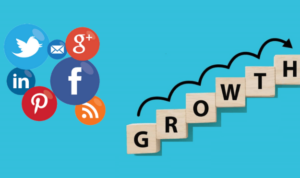Content Promotion Best Practices sets the stage for this enthralling narrative, offering readers a glimpse into a story that is rich in detail with american high school hip style and brimming with originality from the outset.
Get ready to dive into the world of content promotion like never before, where strategies and creativity collide to create a buzz-worthy campaign that’s impossible to ignore.
Content Promotion Best Practices
Content promotion is the process of increasing the visibility and reach of your content to a target audience through various marketing channels. It involves strategies aimed at driving traffic, engagement, and conversions for your content.
Effective content promotion strategies are crucial for maximizing the impact of your content efforts. By promoting your content effectively, you can ensure that it reaches the right audience, generates interest, and drives desired actions such as sign-ups, purchases, or shares.
The Importance of Content Promotion
Content promotion is essential for achieving several key goals, including:
- Increasing brand awareness and visibility
- Driving website traffic and engagement
- Generating leads and conversions
- Building credibility and authority in your industry
Examples of Successful Content Promotion Campaigns
- Red Bull’s Stratos Jump: Red Bull’s live stream of Felix Baumgartner’s record-breaking jump from the edge of space not only generated massive buzz but also showcased the brand’s commitment to extreme sports.
- Dove’s Real Beauty Campaign: Dove’s campaign celebrating real beauty and challenging beauty stereotypes went viral, sparking conversations and positioning the brand as a champion of body positivity.
- BuzzFeed’s Tasty Videos: BuzzFeed’s Tasty recipe videos took social media by storm, driving massive engagement and traffic to the website, showcasing the power of visual content promotion.
Target Audience Identification

Identifying the target audience is crucial in content promotion as it helps in tailoring the message to resonate with the right people, increasing engagement and conversion rates. Understanding who your audience is allows you to create content that speaks directly to their needs, interests, and pain points.
Significance of Target Audience Research
Target audience research involves gathering data and insights about your audience to better understand their demographics, behaviors, preferences, and challenges. This research can be conducted through surveys, interviews, social media analytics, website analytics, and market research reports. By analyzing this information, you can create accurate audience personas that represent different segments of your target audience.
- Utilize surveys and feedback forms to collect information directly from your audience.
- Monitor social media analytics to track engagement metrics and audience demographics.
- Study website analytics to understand visitor behavior, interests, and demographics.
- Review market research reports to gain insights into industry trends and consumer preferences.
Creating Audience Personas
Audience personas are fictional representations of your ideal customers based on real data and research. These personas include details such as demographics, interests, challenges, goals, and preferred communication channels. By creating audience personas, you can tailor your content to specific segments of your target audience, making your promotion efforts more effective.
For example, you may have an audience persona named “Tech-Savvy Tina,” representing young professionals interested in the latest technology trends. Tailoring your content to appeal to Tina’s interests and preferences can help you connect with this segment more effectively.
Impact of Targeting Different Audience Segments
Targeting different audience segments can significantly impact your promotion strategies. By creating content that resonates with specific segments of your target audience, you can increase relevance, engagement, and conversion rates. For instance, targeting a segment of budget-conscious consumers with discount offers may yield higher conversion rates compared to a generic message aimed at a broad audience.
- Personalized content tailored to specific audience segments can drive higher engagement and conversion rates.
- Targeting different segments allows you to address varying needs, preferences, and pain points effectively.
- By analyzing audience data and feedback, you can continuously refine your targeting strategies for optimal results.
Content Distribution Channels: Content Promotion Best Practices

In today’s digital age, there are several content distribution channels available to promote your content and reach a wider audience. These channels play a crucial role in getting your message out there and driving traffic to your website or platform.
Social Media Platforms
Social media platforms like Facebook, Instagram, Twitter, LinkedIn, and Pinterest are powerful tools for content promotion. They allow you to engage with your audience, share updates, and drive traffic back to your website. Each platform has its unique features and audience demographics, so it’s essential to tailor your content to fit the platform you’re using.
- Facebook: Ideal for sharing a variety of content types, including articles, videos, and images.
- Instagram: Perfect for visual content like images and short videos, great for engaging a younger audience.
- Twitter: Best for short, concise updates and links to your content, perfect for real-time engagement.
- LinkedIn: Ideal for professional content, industry news, and thought leadership articles.
- Pinterest: Great for sharing visually appealing content like infographics, step-by-step guides, and DIY projects.
Tip: Choose the right social media platform based on your target audience and the type of content you are promoting.
Email Marketing
Email marketing is another effective content distribution channel that allows you to reach your audience directly in their inbox. By sending out newsletters, updates, and exclusive content, you can drive traffic to your website and keep your audience engaged.
- Newsletters: Regularly send out newsletters with curated content, updates, and promotions to keep your audience informed.
- Exclusive Content: Offer exclusive content or promotions to your email subscribers to incentivize them to visit your website.
Content Aggregators
Content aggregators like Flipboard, Feedly, and Reddit are platforms where users can discover and share content from various sources. By submitting your content to these platforms, you can reach a broader audience and drive traffic back to your website.
- Flipboard: Create a magazine and curate content related to your industry to attract readers and drive traffic.
- Feedly: Submit your blog or website to Feedly to make it easier for users to discover and follow your content.
- Reddit: Participate in relevant subreddits and share your content to engage with the community and drive traffic to your website.
Engagement Strategies
Engaging with the audience is crucial during content promotion as it helps build relationships, increase brand loyalty, and improve overall visibility. By interacting with your audience, you can create a sense of community and trust, leading to higher levels of engagement and conversion rates.
Importance of Audience Engagement
- Respond promptly to comments and messages to show that you value their input.
- Encourage discussions by asking questions and seeking feedback from your audience.
- Run contests or giveaways to incentivize engagement and participation.
Interactive Content for Engagement, Content Promotion Best Practices
Interactive content such as polls, quizzes, surveys, and live videos can significantly boost engagement levels. By involving your audience in the content creation process, you can create a more personalized and interactive experience that resonates with them.
Examples of Successful Engagement Strategies
One successful engagement strategy is user-generated content campaigns, where you encourage your audience to create and share content related to your brand. This not only increases engagement but also builds a sense of community around your brand.
Another effective strategy is hosting live Q&A sessions or webinars to directly interact with your audience, address their concerns, and provide valuable insights or information.
Collaborating with influencers or other brands can also help amplify your reach and engagement by tapping into their existing audiences and creating cross-promotional opportunities.
Best Practices
In the digital world, Search Engine Optimization () is the secret sauce to getting your content noticed by the right audience. By optimizing your content for search engines, you can increase visibility and drive more organic traffic to your website.
On-Page Techniques
- Use relevant s: Incorporate target s naturally throughout your content to signal to search engines what your content is about.
- Create high-quality content: Producing valuable and engaging content not only attracts readers but also improves search engine rankings.
- Optimize meta tags: Write compelling meta titles and descriptions that accurately represent your content to entice users to click.
Off-Page Techniques
- Build backlinks: Earn quality backlinks from reputable websites to establish credibility and authority in the eyes of search engines.
- Social media promotion: Share your content on social media platforms to increase visibility and drive traffic back to your website.
- Guest blogging: Collaborate with influencers or industry experts to write guest posts that link back to your content.
Tips for Optimizing Content for Search Engines
- Research s: Conduct research to identify popular search terms and phrases relevant to your content.
- Optimize images: Use descriptive alt text and file names for images to improve accessibility and .
- Mobile optimization: Ensure your website is mobile-friendly to provide a seamless user experience and boost search engine rankings.
Examples of Best Practices
- Case study: Company X implemented on-page techniques by optimizing their content with relevant s and saw a 30% increase in organic traffic within a month.
- Best practices: By following off-page strategies such as building backlinks and social media promotion, Company Y improved their search engine rankings and doubled their website traffic.





